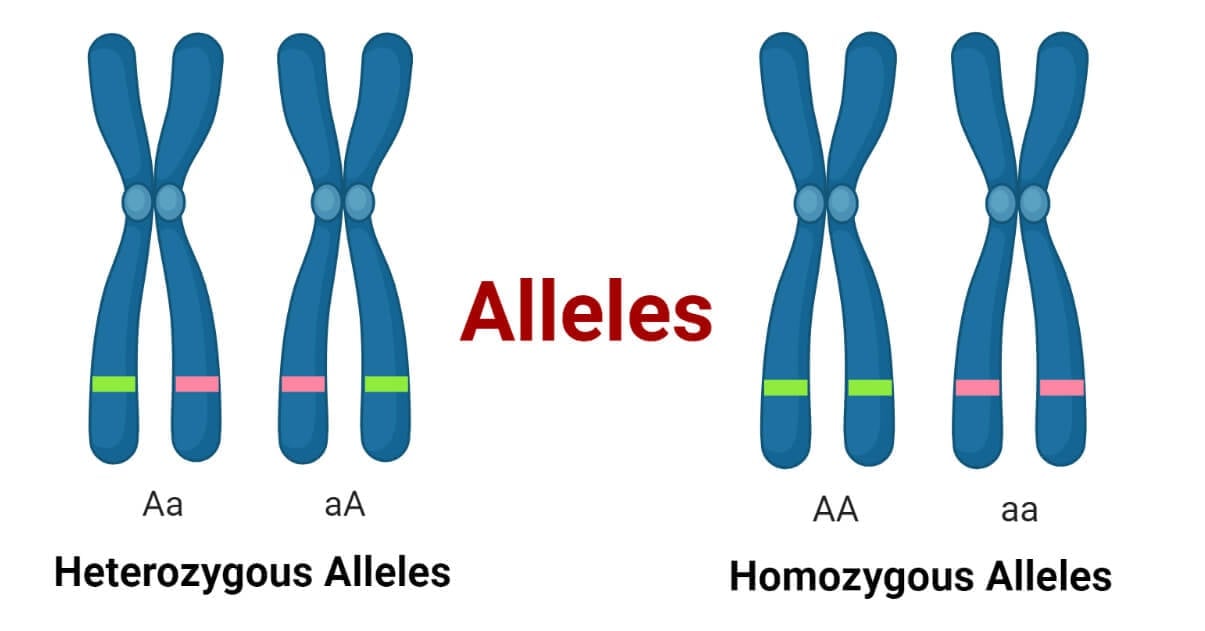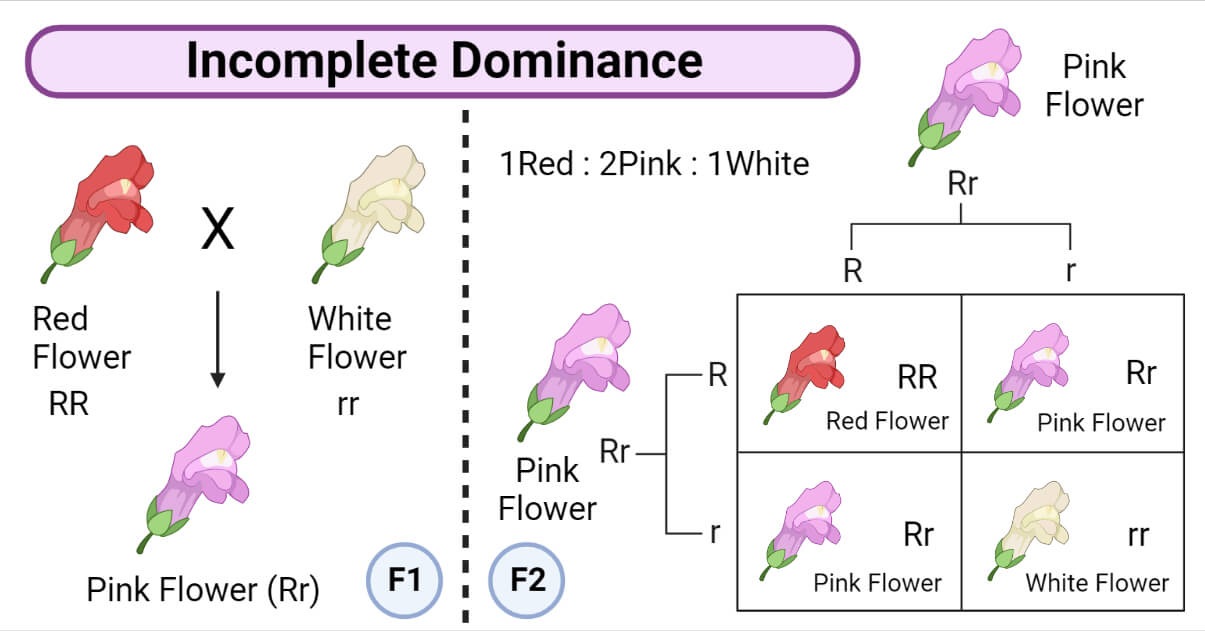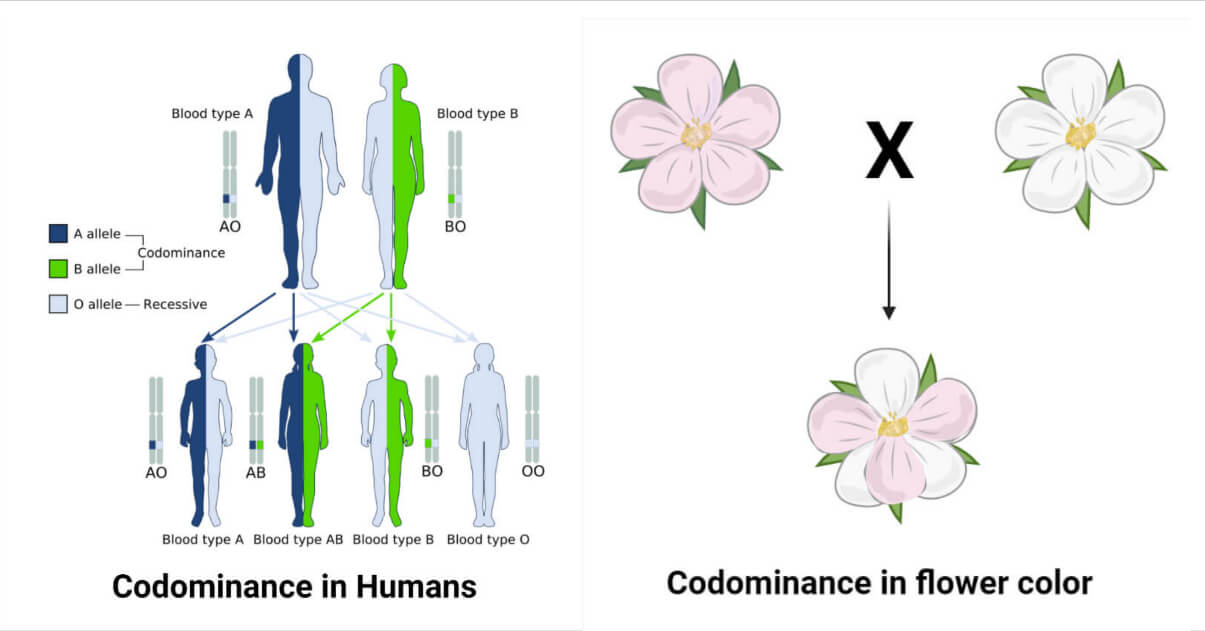A key component of genetics, alleles are crucial for comprehending genetic variation and inheritance patterns. They are distinct gene variants that reside at the same chromosomal locus (position). For each gene, a person receives two alleles, one from each parent. Variations of the same trait or separate traits might occur from the existence of different alleles.

Interesting Science Videos
Types and Features of Alleles
Alleles are distinct due to a number of characteristics.
- First of all, loci are the particular locations that alleles inhabit on chromosomes.
- Understanding the physical organization of genes within the genome depends on knowing where the loci are on the chromosomes.
- Furthermore, each person has two alleles for each gene, one from each parent.
- This enables the genetic variety and variation that is necessary for adaptation and evolution within a population.
- Thirdly, additional genetic or environmental factors may have an impact on how alleles express themselves.
- Even when people share the same genes, this can result in differences in how features are expressed.
Alleles come in a variety of forms. The most prevalent or typical allele in nature that encodes the typical or standard form of a trait is known as a wild-type allele. Alleles that have suffered a change or mutation in their DNA sequence and produced a different version of the trait are said to be mutant alleles. Depending on how they interact with the other allele in the pair, mutant alleles can either be recessive or dominant. Alleles, known as neutral alleles, have no influence on an organism’s phenotype or its observable characteristics.
Dominant and Recessive Alleles
- According to Mendelian genetics, dominant alleles can exist in either one or two copies in a person, whereas recessive alleles can exist in only two copies.
- This indicates that only the dominant allele will be exhibited in the phenotype if a person carries one copy of a dominant allele and one copy of a recessive allele.
- This is so that the effect of the dominant allele, which “dominates” over the recessive allele, can be seen.
- On the other hand, if a person carries two copies of the recessive gene, the dominant allele will not be shown in the phenotype, and the recessive allele will be expressed.
- This is so that the dominant allele’s expression is hidden by the recessive allele.
- An example of this is the inheritance of the trait for widows’ peak, which is a type of hairline. The gene for widows’ peak has two alleles, W and w.
- The W allele is dominant and produces a widow’s peak, while the w allele is recessive and produces a straight hairline.
- If a person inherits one W allele and one w allele, they will have a widow’s peak hairline because the W allele is dominant over the w allele.
Incomplete Dominance
Incomplete dominance is a pattern of inheritance in which neither allele is completely dominant over the other, resulting in an intermediate phenotype. This means that the phenotype of a heterozygous individual is different from both the homozygous dominant and homozygous recessive individuals.

A classic example of incomplete dominance is the inheritance of flower color in snapdragons. The gene for flower color has two alleles: R, which produces red flowers, and W, which produces white flowers. When a homozygous red-flowered plant (RR) is crossed with a homozygous white-flowered plant (WW), the F1 generation has pink flowers (RW), which is an intermediate phenotype between red and white.
Codominance
Codominance is another pattern of inheritance in which both alleles are expressed equally in the phenotype of a heterozygous individual. This means that both traits associated with the alleles are observed in the individual.

A classic example of codominance is the inheritance of blood type in humans. The gene for blood type has three alleles: A, B, and O. A and B are codominant, while O is recessive. This means that if an individual inherits one A allele and one B allele, both A and B antigens will be present on the surface of their red blood cells.
Multiple Alleles
Multiple alleles are more than two alternate forms of a gene that exist within a population. This means that there are more than two possible versions of a particular gene in the gene pool of a population, and each individual can carry at most two of these alleles.
A classic example of multiple alleles is the inheritance of coat colour in rabbits. The gene for coat colour has four different alleles: C (full colour), Cch (chinchilla), Chd (Himalayan), and c (albino). Each allele produces a different coat colour, and the inheritance of these alleles can result in a wide range of coat colours and patterns.
Role In The Genetics
In genetics and biology, alleles are significant. First and foremost, they are in charge of a species’ internal genetic diversity and variation, which is crucial for adaptation and evolution. For instance, the presence of various alleles can offer immunity to specific diseases or allow for survival in various conditions. Second, the presence of distinct alleles can influence qualities that are relevant to medicine or clinical practice, such as drug responsiveness or illness susceptibility. Understanding human health and disease depends on this. Finally, alleles can serve as genetic markers or instruments for identifying particular people, groups of people, or animals.
Gene Expression
- The process by which the data contained in the gene is utilised to make a useful product, such as a protein, is referred to as the expression of an allele.
- Numerous variables, including the environment and epigenetic changes, can affect how genes are expressed.
- The activity of enzymes and other proteins involved in the process can be influenced by environmental factors like temperature, pH, and the presence of specific compounds.
- For instance, exposure to particular chemicals can alter gene expression, which can result in disorders like cancer.
- Epigenetic modifications, such as DNA methylation and histone modification, can also influence gene expression by altering the way DNA is packaged and regulated.
- These modifications can be passed down from one generation to the next and can have a profound impact on an individual’s health and well-being.
Population Genetics, Genetic Diversity, and Evolution
For the study of population genetics, genetic diversity, and evolution, this is crucial. Numerous species contain examples of alleles.
- The blood type gene in humans contains three alleles: A, B, and O. The O allele is recessive and only expressed in homozygous people, whereas the A and B alleles are codominant, meaning they both display their qualities equally in heterozygous people.
- The round (R) and wrinkled (r) alleles make up the pea plant’s two alleles for the seed shape gene. A heterozygous plant (Rr) will be round because the round allele is dominant and the wrinkled allele is recessive.
- The fur colour gene in mice has several alleles that result in a variety of hues and patterns, including black, brown, white, agouti, and albinism.
Alleles are connected to genetic illnesses as well. The function or expression of a gene is altered by mutations in one or more alleles, which are the root cause of many genetic illnesses.
- Some genetic disorders are produced by dominant alleles, which implies that even if a person only carries one copy of the mutant allele, the other allele, which is wild-type, will not cause the disease.
- Other genetic disorders are brought on by recessive alleles, which implies that two copies of the mutant allele (one from each parent) must be inherited for a person to manifest the illness phenotype.
- Huntington’s disease, Marfan syndrome, and achondroplasia are a few examples of genetic disorders brought on by dominant alleles. Cystic fibrosis, sickle cell anaemia, and phenylketonuria (PKU) are a few examples of genetic disorders brought on by recessive alleles.
Inheritance Patterns and Genetic Variation
For many disciplines, including genetics, biology, medicine, and evolution, it is critical to comprehend the significance of alleles in inheritance patterns and genetic variation. Alleles are a tool used by geneticists and biologists to research population genetics, genetic variation, and evolution. Researchers in the pharmaceutical industry utilise alleles to create medications that specifically target particular alleles or genetic variations, while medical practitioners use alleles to diagnose and treat genetic illnesses. Alleles are fundamental to understanding genetics and have profound effects on a wide range of fields in both science and medicine.
Environmental Adaptation
Genetic variety is made possible by the occurrence of various alleles within a population, which is advantageous for survival and environmental adaptation. For instance, some people may have genes that make them resistant to specific diseases or enable them to endure harsh conditions.
- A person’s total genetic makeup is influenced by the complicated interactions between alleles, which can affect how features are expressed.
- Different alleles can affect the likelihood of developing a certain disease or medical condition.
- For instance, when specific mutations are present, the BRCA1 and BRCA2 genes are linked to an elevated risk of breast and ovarian cancer.
- Similar to this, the HLA genes are linked to autoimmune disease propensity.
- To enable early detection and treatment, genetic testing can be done to determine the existence of particular alleles or mutations linked to various disorders.
- Alleles can be crucial in practical terms in addition to their significance in genetics and medicine.
- For instance, genetically modified organisms (GMOs) have been created by inserting particular alleles into an organism’s genome in order to bestow advantageous features, such as pest resistance or enhanced productivity.
- Likewise, forensic experts Similarly, forensic scientists can use DNA analysis to identify individuals based on their unique alleles, which can be useful in criminal investigations.
Genetic Diseases
Many genetic diseases are caused by mutations in one or more alleles of a gene. These mutations can result in a wide range of health problems, from mild to severe. Some genetic diseases are inherited in a simple Mendelian fashion, while others are more complex and involve multiple genes.
Examples of genetic diseases include sickle cell anaemia, cystic fibrosis, and Huntington’s disease.
- Sickle cell anaemia is caused by a mutation in the gene for haemoglobin, which results in misshapen red blood cells that can lead to pain, organ damage, and other health problems.
- Cystic fibrosis is caused by a mutation in the gene for the cystic fibrosis transmembrane conductance regulator (CFTR), which results in thick, sticky mucus that can clog the lungs and other organs.
- Huntington’s disease is caused by a mutation in the gene for the protein huntingtin, which leads to the gradual degeneration of brain cells and can cause a wide range of physical and cognitive symptoms.
Gene Mapping
Finding the relative positions of genes on a chromosome is the process of gene mapping. Many methods, including linkage analysis and genome-wide association studies, can be used to do this. Studying the inheritance patterns of genetic markers that are close to a gene of interest is known as linkage analysis. Researchers can ascertain the relative position of the gene on the chromosome by looking at how frequently specific genetic markers are inherited together.
Genome-wide association studies involve analyzing the genomes of large numbers of individuals to identify genetic variations that are associated with a particular trait or disease. This approach has been used to identify genes that are associated with a wide range of conditions, including diabetes, heart disease, and cancer.
Conclusion
In conclusion, alleles are a fundamental concept in genetics and biology, influencing genetic variation, inheritance patterns, and the expression of traits. The presence of different alleles within a population is essential for adaptation and evolution, and alleles can also be associated with specific diseases or medical conditions. Understanding the role of alleles is important for many fields, including genetics, medicine, and agriculture, and will continue to be a key area of research and development in the future.
Alleles are an essential concept in genetics, biology, and medicine. They are alternative forms of a gene that determine the traits or variations of traits that an individual exhibits. Alleles can be wild-type, mutant, or neutral and can be dominant, recessive, or codominant. They are responsible for genetic diversity and variation within a population, which is essential for adaptation and evolution.
Additionally, alleles can affect the susceptibility to diseases, response to drugs, or other traits that have medical or clinical relevance. Many genetic diseases are caused by mutations in one or more alleles that affect the function or expression of a gene. Alleles are a fundamental concept in genetics and play a crucial role in determining an individual’s phenotype and genetic traits.
The study of alleles has contributed significantly to our understanding of inheritance patterns and genetic diseases and has led to many important discoveries in the field of genetics. By studying the genetics of different organisms and populations, researchers can gain valuable insights into the complexity and diversity of life on Earth.
References
- Multiple alleles, incomplete dominance, and codominance – https://www.khanacademy.org/science/biology/classical-genetics/variations-on-mendelian-genetics/a/multiple-alleles-incomplete-dominance-and-codominance
- Pleiotropy and lethal alleles – https://www.khanacademy.org/science/biology/classical-genetics/variations-on-mendelian-genetics/a/pleiotropy-lethal-alleles-and-sex-linkage
- Allele Definition – https://byjus.com/biology/allele-definition/
- Allele Definition – https://www.biologyonline.com/dictionary/allele
- Allele – https://www.vedantu.com/biology/allele
